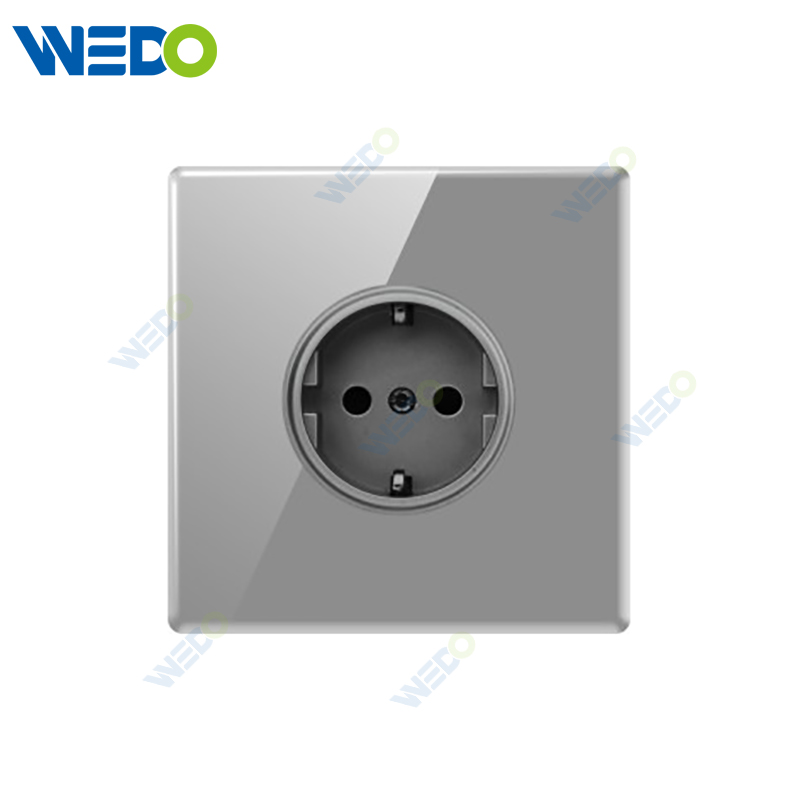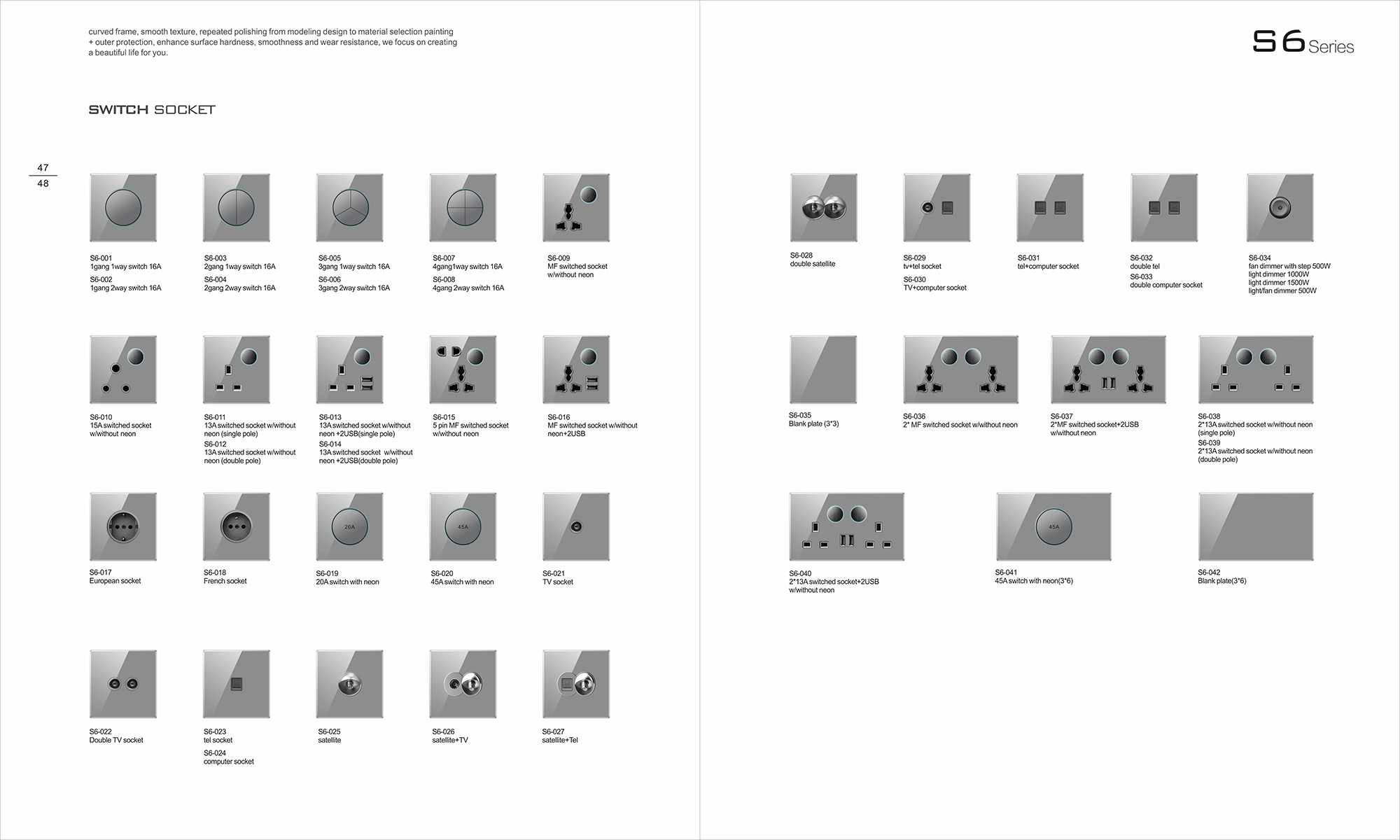Views: 97 Author: Site Editor Publish Time: 2023-08-01 Origin: Site
The European plug socket may be familiar to you if you've ever travelled to Europe or bought electronics made in Europe. What distinguishes it from other plugs and how does it work? We will go deeply into the world of European plug sockets in this post so that you have a thorough understanding of all of their features, compatibility, design, and safety considerations. This page is your go-to resource if you're arranging a vacation to Europe or want to learn more about electrical systems.
A common electrical outlet used in Europe and other places that adhere to European electrical standards is the European plug socket. It is well known for its small size and rounded shape and is also referred to as a Type C or Europlug socket. It differs from other plug types used worldwide because it has two circular metal pins, frequently with a grounding pin in the middle.
The European plug socket has a fascinating history that traces back to the early days of electricity. Let's take a journey through time to understand its evolution:
Electricity began to enter homes and businesses in the late 19th and early 20th centuries. Different plug and socket designs arose during this time in various nations. Travellers and manufacturers struggled with these early connectors since they were frequently large and unstandardized.
Electrical plugs and sockets were attempted to be standardised across Europe in the 20th century. The Schuko plug and socket system, which served as the foundation for contemporary European plug sockets, was developed with significant help from the Committee of European Electrotechnical Standardisation (CEE).
To increase the adaptability and security of European plug outlets, the Type C plug, sometimes referred to as the Europlug, was developed. A variety of electrical devices may fit well in it thanks to its small size and rounded shape. It presently ranks among the most common plug types in Europe.

The design of the European plug socket serves multiple purposes, from safety to ease of use. Let's explore its key design features:
A secure fit with the appropriate holes in electrical appliances and devices is ensured by the two spherical metal pins in the European plug socket. These pins are balanced and stable when they are in position because of their uniformly spaced spacing.
Some European plug sockets only have two pins, whereas others also feature a grounding pin in the middle. By offering an earth connection to prevent electrical shocks and safeguard both users and equipment, the grounding pin improves safety.
The European plug socket's tiny size is one of its most important benefits. The installation of many sockets near together is made possible by this design, maximising the use of wall outlets.
The European plug socket, in contrast to certain other plug types, is unpolarized, which means it can be inserted either way. By doing away with the need to fiddle with the plug's orientation, this feature makes it more user-friendly.
The European plug socket is made specifically to accommodate Europlug gadgets. "Europlugs" are widely used in Europe for low-power electrical devices including camera flashes, cell phone chargers, and mini appliances.
Due to its wide adoption and standardization, the European plug socket offers remarkable versatility. Let's explore the various aspects of its versatility:
The European plug socket is an easy option for visitors to Europe. This style of socket is common throughout most of Europe, making it cross-border compatible. In the majority of European countries, travellers can use their Europlug gadgets without the need for adapters.
The European plug connector is supported by many universal adapters, which are popular among foreign travellers. They may use their electrical devices in various locations without having to carry around multiple plugs thanks to these adapters.
The European plug socket is a great option for DIY enthusiasts due to its uniform and compact design. Many do-it-yourself tasks that call for electrical connections use it extensively.
The plug sockets in Europe are made to perfectly accommodate European equipment. A precise fit and trouble-free operation are ensured by the fact that these appliances frequently include Europlugs.
Safety is of paramount importance in any electrical system. The European plug socket incorporates several safety features to protect users and devices:
The high insulation and fire-resistance of the materials chosen for the construction of European plug sockets is a key factor in their selection. This lowers the possibility of fires brought on by electrical problems and eliminates the chance of electrical short circuits.
Many plug sockets in Europe have childproof features. Among these features are shuttered socket holes, which make it challenging for kids to put foreign objects and prevent unintentional electric shocks.
In the event of failures or power surges, grounding pins on European plug sockets provide additional safety by directing excess current to the earth.
Regulating organisations have high safety criteria for plug sockets throughout Europe. To guarantee the safety of their products, manufacturers must adhere to certain requirements.
As with any popular topic, the European plug socket is not immune to myths and misconceptions. Let's debunk some of the common ones:
Contrary to popular assumption, not every European nation has a similar type of plug outlet. While the majority of countries utilise Type C Europlugs, some have also adopted Type F and Type E.
Some people think the Europlug is dangerous since it doesn't ground. The Europlug is made for low-power devices, therefore the lack of grounding does not pose a threat to their safety.
The majority of contemporary electronic equipment have dual voltage capability and can be immediately plugged into European outlets, while adapters are useful for using non-Europlug devices in Europe.
The European plug socket remains relevant and frequently used despite the availability of newer plug types on the market because of its benefits for standardisation and compatibility.

With the aid of a plug adaptor, you can use American electronics in European plug sockets. Nowadays, a lot of electronics are built to handle dual voltage, making them adaptable to various electrical systems found all over the world.
The United Kingdom uses a distinct type of plug known as the Type G, which has three rectangular pins, hence the European plug socket is not directly compatible with British electronics. However, to make your British electronics compatible with European plug sockets, you can use a plug adapter or a travel converter.
Yes, you can use a Type C Europlug device in many non-European nations, particularly in areas where the European electrical standards have been accepted. The voltage compatibility of your device must be verified, though, as different nations may have different voltage specifications.
Utilising low-power gadgets is generally safe because it is what the European plug socket is made for. It's essential to consider both the power rating of the outlet and the appliance when utilising high-power equipment to minimise the risk of overloading and other dangers.
It is not advised to alter a European plug socket to accommodate another plug type as this could jeopardise safety and create electrical dangers. For compatibility, it is best to use the right plug adapters or converters.
While Type C European plug sockets are most frequently used in Europe, other plug types are also used in a few other places. For instance, Type F (Schuko) plugs are frequently used in Germany and a few of its neighbours. Understanding the precise plug type used in the nation you are travelling to or staying in is crucial.
For low-power appliances like computers, cameras, and phone chargers, the European plug socket is primarily intended. Use of a Type F (Schuko) plug socket, which is better suited to resist greater currents, may be required for high-power appliances like hair dryers.
In conclusion, it should be mentioned that the European plug socket, sometimes referred to as the Type C or Europlug socket, is a widely accepted standard throughout Europe and other parts of the world. It is a practical option for both travellers and do-it-yourselfers due to its small size, rounded shape, and compatibility with Europlug devices. Users can use this plug type safely if they are aware of the safety features and common myths associated with it.
The ability to recognise a European plug outlet will be useful whether you're organising a vacation to Europe or are just interested in electrical systems. Keep in mind that safety should always come first while working with electrical connections, and that seamless compatibility requires utilising the right plug adapters and converters.